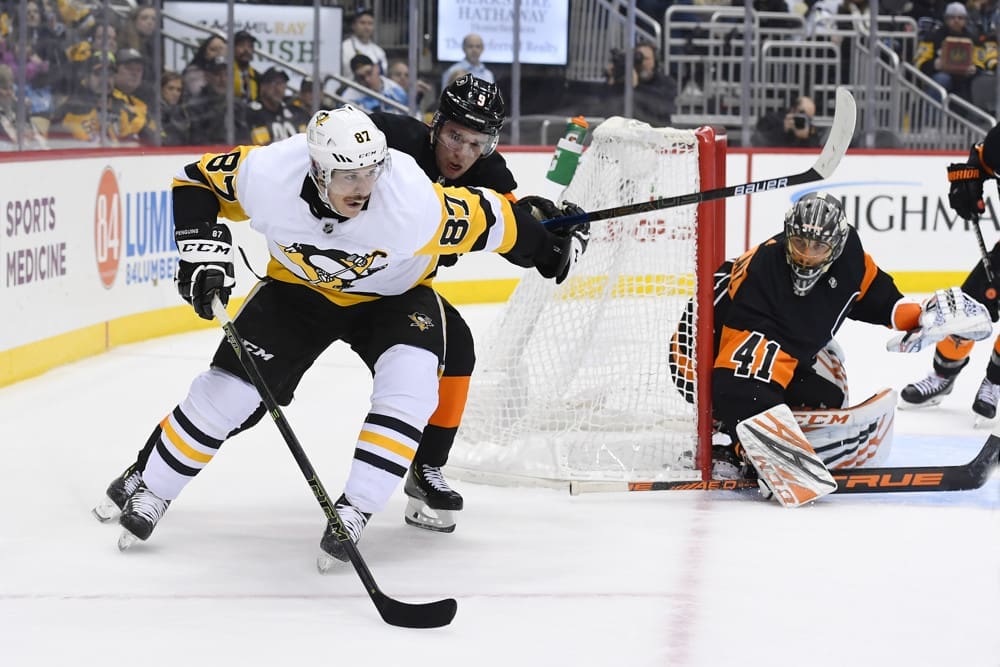Penguins
Sidney Crosby ‘Best 200-foot Player in the Game’ Studied Penguins PK

CRANBERRY TOWNSHIP, Pa. – Sidney Crosby as a penalty killer has been an evolution, from his earliest seasons with the Pittsburgh Penguins when he wasn’t involved, to a stretch of time when he got some shorthanded time, to another stretch with little involvement, to now.
Crosby over the past weeks has been a regular, although not primary, member of the penalty kill, usually with winger Jake Guentzel as his forward partner.
One thing that has never changed is Crosby’s interest in the schemes and nuances of killing penalties. Because, you know, it’s hockey. In those early days of his career, the prolific center sat in on team penalty kill meetings out of curiosity and an abundance of enthusiasm.
He never stopped attending those meetings, although he pointed out Monday that in these days of intense video sessions and full-team involvement, “Most of the team is there for all the meetings anyway, regardless of whether you’re in that situation or not. It’s good that way. I think that’s the whole point so that if guys get thrown in in different situations, they’re aware of what to do.”
Crosby has never shied from defensive responsibilities, so being a penalty killer is a welcomed venture. He also represents a threat offensively even while shorthanded. Even when he wasn’t a regular, he would often be sent out while the Penguins were shorthanded to take a faceoff or to play the final seconds of an opponent’s power play so he would already be on the ice for the ensuing even-strength situation.
Getting back into playing shorthanded a little more has come with a bit of a learning curve, even for such a student of the game and someone with all those logged penalty kill meeting hours.
“It took probably a few shifts,” Crosby said. “It depends. The in-zone (play) is a little different, depending on who you play, trying to be aware of passing lanes and things like that. That’s still not completely comfortable yet, but as far as team’s breakouts and things like that, there’s a lot of anticipation and just reading plays and things. That comes a little bit quicker.”
For a long time, the Penguins brass pointed to Crosby’s workload as a reason to keep him off the penalty kill because, well, he’s pretty important as an offensive player. The current brass has been able to manage Crosby’s minutes and still get him on the ice in shorthanded situations.
According to naturalstatrick.com, Crosby has helped to create as many high-danger scoring chances while shorthanded as his penalty-killing unit has allowed (2). In the nearly 16 minutes Crosby has played shorthanded, opponents have 10 shots on goal, while remarkably the Penguins have a seven.
Crosby said killing penalties, and even just sitting in on those meetings, also helps him get a better understanding of the power play. He’s been a mainstay there his entire career.
“You learn a lot as far as what you can do on the power play when you’re involved in the PK, how teams try to defend certain things,” he said. “If you’re not on the penalty kill, you can still take some things away from those meetings, too.”
One other potential benefit to Crosby killing penalties is that it might enhance his chances of contending for the Selke Trophy, which goes to the NHL’s best two-way forward. Traditionally, it’s been difficult to win that if you aren’t a penalty killer.
He has coach Mike Sullivan’s endorsement.
“I think when people look at Sid and his game, they don’t think about his defense because he’s so dynamic offensively and always has been,” Sullivan said. “But when you look at his overall game, it’s the most complete game, I think, that any player possesses. He’s the best 200-foot player in the game.”












